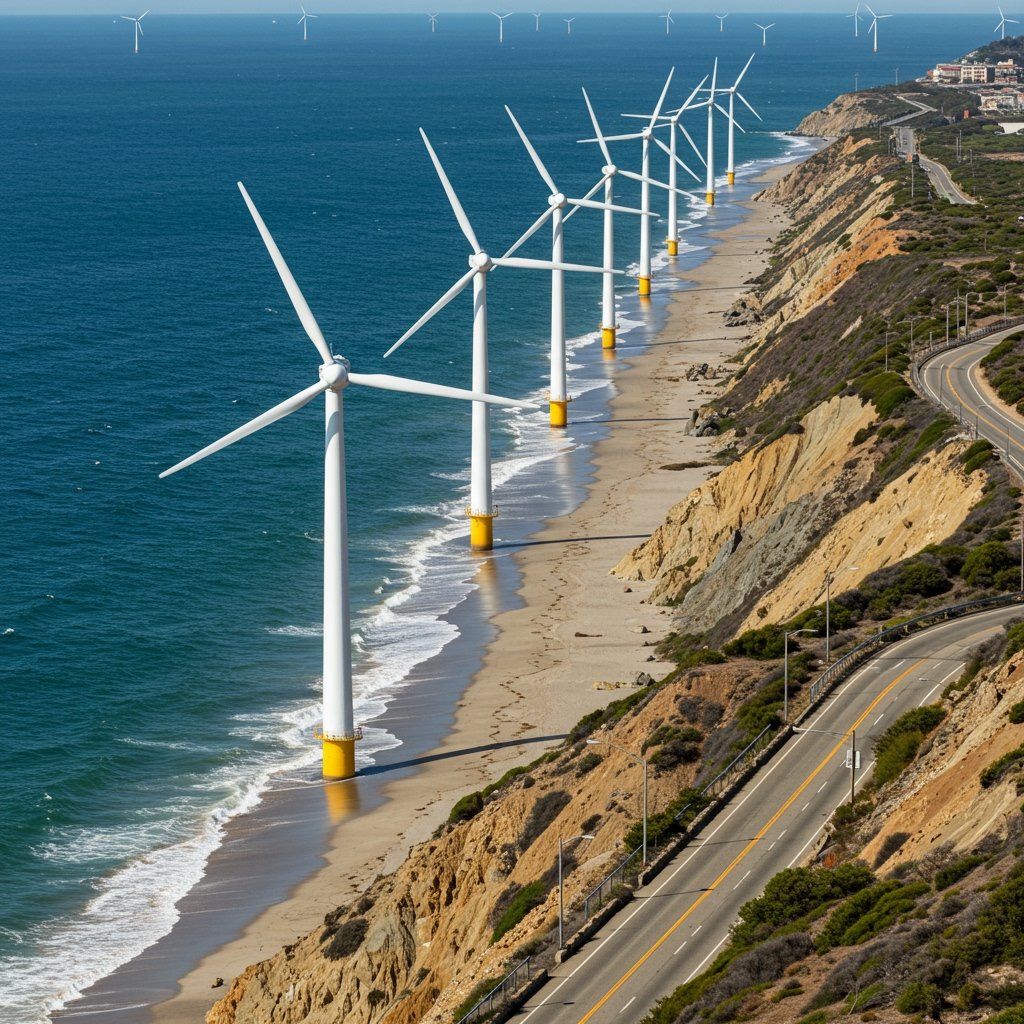California Lawmakers Launch Investigation into Offshore Wind Impacts
SACRAMENTO, CA – California lawmakers have initiated a formal legislative investigation into the potential environmental and economic impacts of burgeoning offshore wind farm projects along the state’s coastline. A newly formed joint legislative committee has been tasked with this critical review, signaling a significant step in California’s approach to balancing ambitious renewable energy goals with potential consequences for marine ecosystems and coastal communities.
The committee, established specifically to examine these complex issues, is co-chaired by State Senator Lena Torres (D-Monterey) and Assemblymember Ben Carter (D-Humboldt). Their leadership underscores the geographic relevance of the investigation, as both Monterey and Humboldt counties are located near areas identified for initial offshore wind development. The bipartisan nature of the committee ensures a broad perspective will be brought to bear on the multifaceted challenges and opportunities presented by this emerging industry.
Committee Formation and Mandate
The creation of this joint committee comes at a pivotal moment as California advances plans to tap into the vast wind resources off its coast. The committee’s core mandate is to conduct a thorough and objective assessment of the environmental effects on diverse marine life, including migratory birds, marine mammals, and fish populations, as well as the economic impact on vital coastal industries, particularly the long-standing and culturally significant fishing industry. The investigation aims to inform future legislative and regulatory decisions, ensuring that offshore wind development proceeds in a manner that is environmentally responsible and economically sustainable for affected communities.
Catalysts and Concerns
The impetus for forming this investigative committee was significantly influenced by a report released on February 10, 2025, by the California Coastal Commission. This report highlighted potential disruptions associated with initial Phase 1 developments near Morro Bay and Humboldt Bay. These areas are among the first targeted for floating offshore wind technology on the U.S. West Coast. Concerns raised in the commission’s report likely include potential impacts from seafloor disturbance during installation, noise pollution during construction and operation, effects on marine mammal migration routes, entanglement risks for wildlife, and potential interference with commercial and recreational fishing activities.
The scale of proposed projects, while offering substantial clean energy potential, also raises questions about cumulative impacts over time and across broader ocean areas. The committee’s probe is intended to delve deeper into these concerns, seeking expert opinions and gathering comprehensive data beyond the initial findings of the Coastal Commission report.
The Hearing Process
To fulfill its mandate, the joint committee will conduct a series of public hearings designed to solicit input from a wide array of stakeholders and experts. These hearings are scheduled to begin in late February 2025. The locations for the hearings reflect the balance between state-level policy formation and local impacts; sessions will be held both in Sacramento, the state capital, and in key coastal communities directly affected by or involved in offshore wind development discussions. This approach ensures that the voices of those living and working closest to the proposed project sites are heard directly by lawmakers.
The public nature of these hearings allows for transparency and provides a platform for various perspectives to be presented and scrutinized. It is expected that these sessions will involve detailed presentations on the technical aspects of offshore wind technology, environmental baseline data, predicted impacts, proposed mitigation strategies, and economic analyses.
Stakeholder Perspectives
A diverse group of industry groups and environmental organizations are anticipated to provide extensive testimony before the committee. Among those expected to testify are the Pacific Fisheries Collaborative, representing the interests of the commercial and recreational fishing industries, who have voiced concerns about potential impacts on fishing grounds, navigation, and target species. Also expected is Coastal Environment Watch, a prominent environmental organization likely to present findings on potential ecological risks and advocate for stringent environmental protections and monitoring protocols.
Other participants will likely include representatives from offshore wind development companies, labor unions, port authorities, state and federal regulatory agencies, marine scientists, academic researchers, and potentially, representatives from other coastal industries such as tourism. The testimony is expected to cover specific details about proposed projects, potential mitigation measures to reduce harm to marine life and fisheries, strategies for workforce development, and potential economic benefits and costs associated with the projects.
Broader Context and Future Steps
California has set ambitious goals for transitioning to renewable energy and achieving carbon neutrality. Offshore wind is seen as a crucial component of this strategy, offering the potential for large-scale, consistent power generation, particularly as traditional onshore renewable sources face siting challenges. However, the scale and nature of offshore development in deep waters off the California coast require floating platform technology, which is less proven globally than fixed-bottom turbines and presents unique engineering and environmental considerations.
The findings and recommendations resulting from the joint committee’s investigation are intended to inform future legislation, regulatory frameworks, and state agency actions related to offshore wind leasing, permitting, and environmental review. The committee’s work is critical for establishing a robust, science-based approach to development that seeks to maximize clean energy benefits while minimizing negative impacts on California’s invaluable coastal and marine resources and the communities that depend on them.
Conclusion
The launch of the joint legislative committee’s probe signifies California’s commitment to a careful and deliberate approach to offshore wind development. By initiating a formal investigation into the environmental and economic impacts, led by Senator Torres and Assemblymember Carter, the state aims to gather comprehensive information from experts and stakeholders. The public hearings, commencing in late February 2025 in Sacramento and coastal communities, following the critical February 10, 2025, California Coastal Commission report, will provide a vital platform for groups like the Pacific Fisheries Collaborative and Coastal Environment Watch to share their perspectives. This thorough review is essential for navigating the complexities of integrating large-scale renewable energy projects into sensitive marine environments and ensuring a sustainable future for both California’s energy needs and its coastal heritage.



















